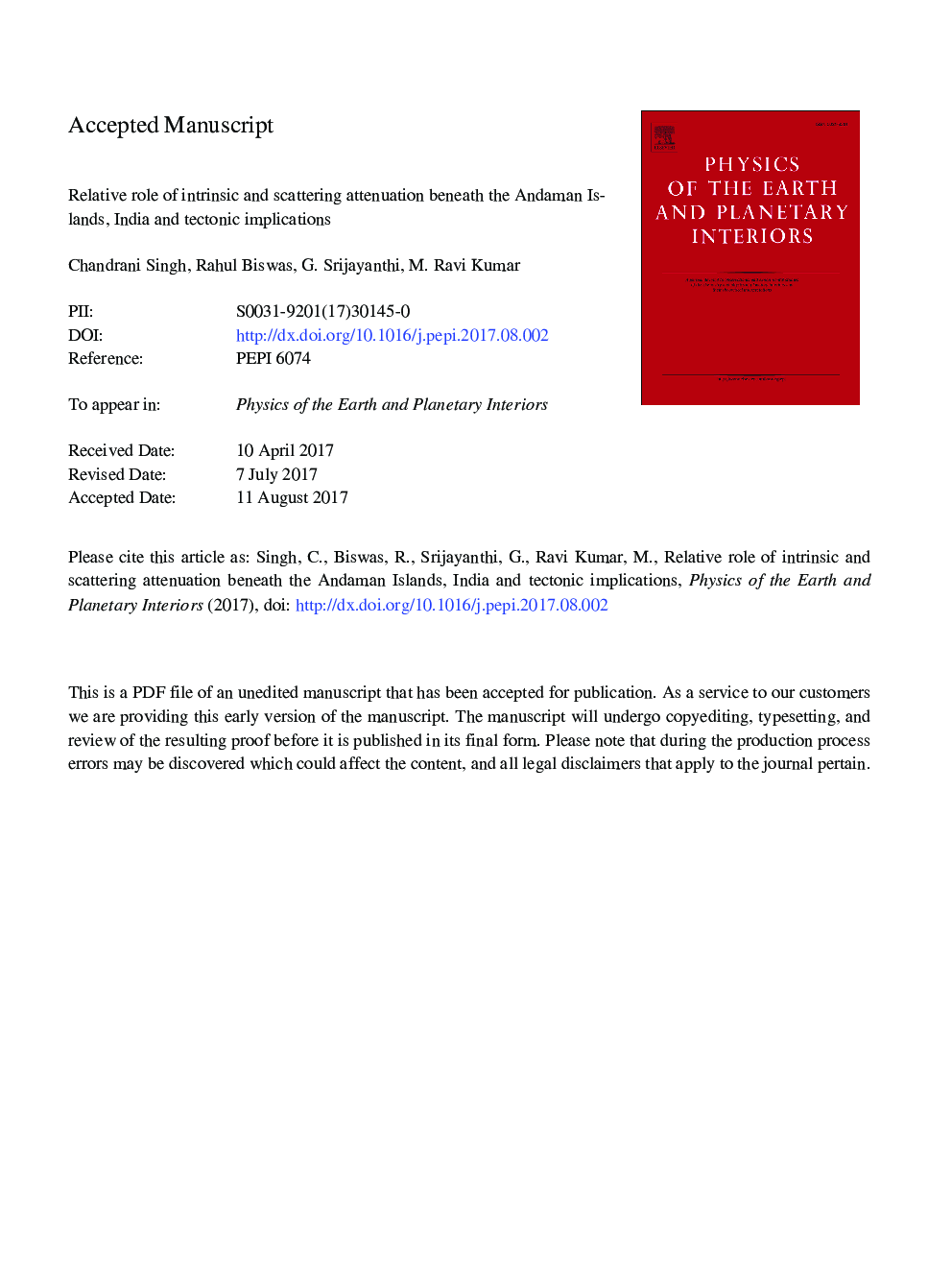| Article ID | Journal | Published Year | Pages | File Type |
|---|---|---|---|---|
| 5787266 | Physics of the Earth and Planetary Interiors | 2017 | 32 Pages |
Abstract
The attenuation characteristics of seismic waves traversing the Andaman Nicobar subduction zone (ANSZ) are investigated using high quality data from a network of broadband stations operational since 2009. We initially studied the Coda wave attenuation (Qc-1) under the assumption of a single isotropic scattering model. Subsequently, following the multiple isotropic scattering hypothesis, we isolated the relative contributions of intrinsic (Qi-1) and scattering (Qsc-1) attenuation employing the Multiple Lapse Time Window Analysis (MLTWA) method within a frequency range 1.5-18Â Hz. Results reveal a highly attenuative nature of the crust, with the values of Qc being frequency dependent. The intrinsic absorption is mostly found to be predominant compared to scattering attenuation. The dominance of Qi-1 in the crust may be attributed to the presence of fluids associated with the subducted slab. Our results are consistent with the low velocity zone reported for the region. A comparison of our results with those from other regions of the globe shows that the ANSZ falls under the category of high intrinsic attenuation zone. Interestingly, the character of ANSZ is identical to that of eastern Himalaya and southern Tibet, but entirely different from the Garhwal-Kumaun Himalaya and the source zone of Chamoli earthquake, due to the underlying mechanisms causing high attenuation.
Keywords
Related Topics
Physical Sciences and Engineering
Earth and Planetary Sciences
Geophysics
Authors
Chandrani Singh, Rahul Biswas, G. Srijayanthi, M. Ravi Kumar,
